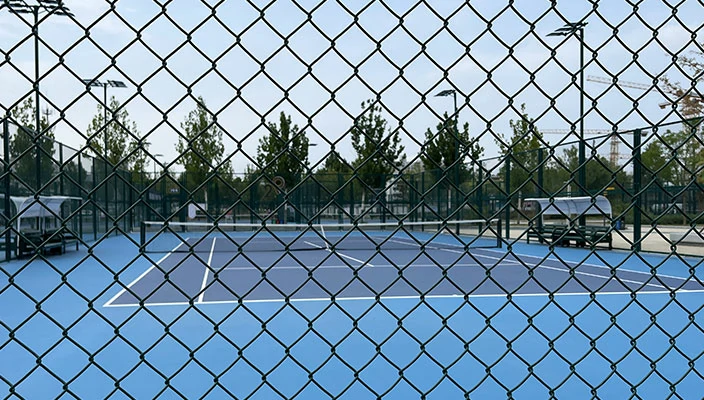Analysis of Expenses Related to Welded Wire Fabric Production and Supply
Understanding the Cost of Welded Wire Fabric
Welded wire fabric, also known as welded wire mesh, is an essential component in the construction industry, widely used for reinforcement in a variety of structures, from concrete slabs to walls, precast panels, and even for agricultural purposes. Understanding the costs associated with welded wire fabric is crucial for contractors, builders, and anyone involved in construction and engineering.
Factors Influencing Cost
The cost of welded wire fabric can vary widely based on several factors. One of the primary considerations is the wire gauge. The thicker the wire, the stronger the mesh, but also the more expensive it is. Common wire gauges vary from 8 to 18, with thicker wires typically providing higher tensile strength necessary for load-bearing applications.
Another significant factor is the spacing of the wires. Welded wire fabrics are available in various mesh sizes, which refer to the distance between the vertical and horizontal wires. Smaller mesh sizes often lead to higher costs due to the higher density of the material needed. Additionally, the configuration of the mesh—for instance, the orientation of wires—can impact costs, as customized designs may be necessary for specific structural requirements.
Material composition also plays a crucial role in determining cost. Traditionally, welded wire fabric is made from steel, but stainless steel and galvanized wire options are also available. Galvanized wire, coated with zinc to prevent rusting, tends to be more expensive but is ideal for environments where corrosion is a risk. Stainless steel is the most expensive option but offers superior resistance to harsh conditions, making it suitable for applications in industries like food processing or marine environments.
Quantity and Production Process
cost of welded wire fabric

The quantity of welded wire fabric being ordered also affects pricing. Bulk orders often come with discounts, whereas smaller quantities might incur additional overhead costs. Moreover, the production process—from the welding technique to the cutting and bending required—can influence the final cost. Advanced automated systems, while increasing efficiency, may lead to higher upfront costs but can reduce long-term costs through decreased labor and waste.
Additionally, regional differences in production costs, such as labor and shipping, can affect the prices of welded wire fabric. Areas with higher labor costs or those that require long-distance transportation will likely see increased prices. Therefore, understanding local market conditions can help in estimating costs more accurately.
Application and Demand
The application of welded wire fabric can also dictate its price. For instance, reinforced concrete used in urban construction may require specific standards and certifications, influencing cost due to higher-quality materials and testing protocols. As urbanization continues across the globe, the demand for quality welded wire fabric has surged, causing fluctuations in pricing. Economic factors, including raw material costs and construction demand, also play a significant role.
Conclusion
In conclusion, the cost of welded wire fabric is determined by a variety of factors, including wire gauge, spacing, material type, quantity, regional production costs, and the specific applications required. Understanding these parameters helps contractors and builders make informed decisions that align with their project budgets and timelines. As the construction industry evolves and demands for robust materials increase, staying informed about pricing trends and material advancements will facilitate better planning and cost estimation for future projects. By carefully considering these elements, stakeholders can ensure they select the right type of welded wire fabric that not only meets structural requirements but also adheres to their financial constraints.
-
Successful Participation at the 137th Canton Fair in April 2025NewsApr.20,2025
-
Successful Participation at the 2025 NAHB International Builders' Show (IBS) in Las VegasNewsFeb.28,2025
-
Successful Participation at the 2025 Philippine World Building and Construction Exposition (WorldBex) in ManilaNewsMar.20,2024
-
Successful Participation at the 2024 Canton FairsNewsOct.20,2024
-
Successful Participation at the 2024 Canton FairNewsApr.20,2024
-
Successful Participation at the 2024 Philippine World Building and Construction Exposition in ManilaNewsMar.20,2024




